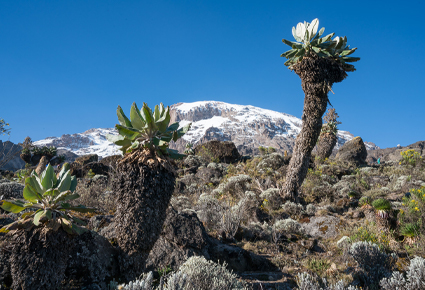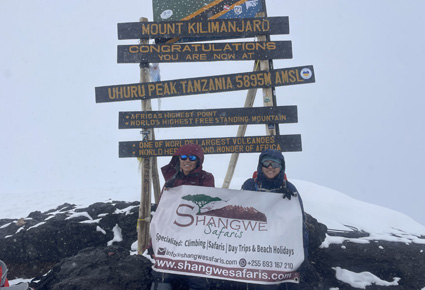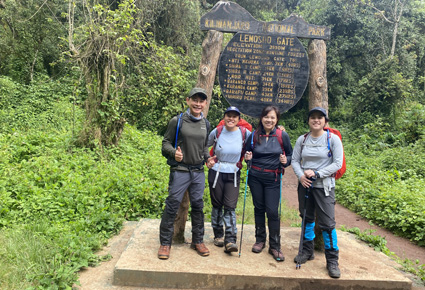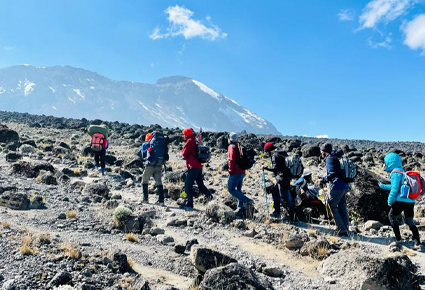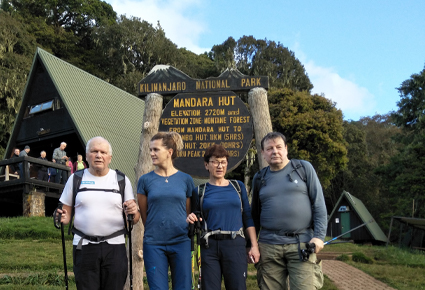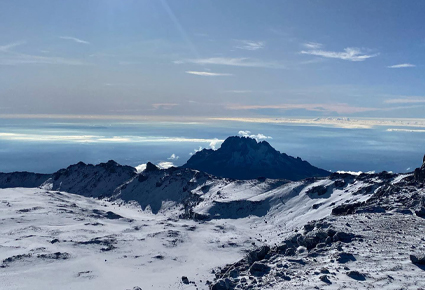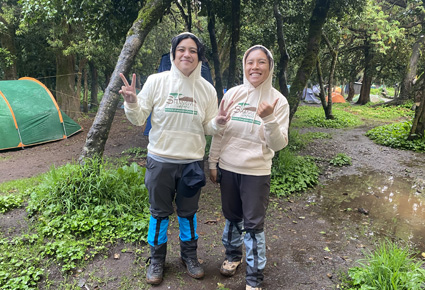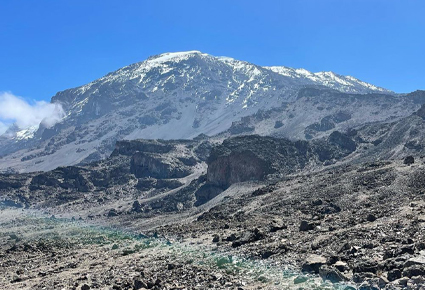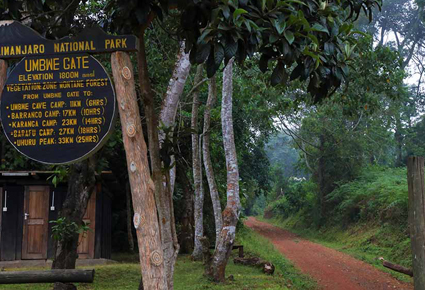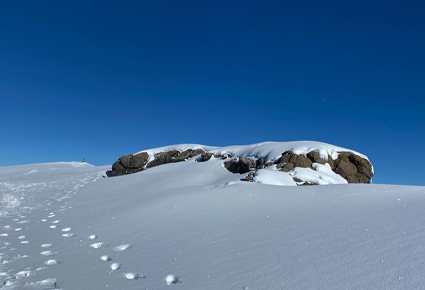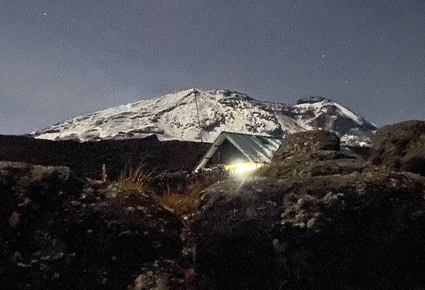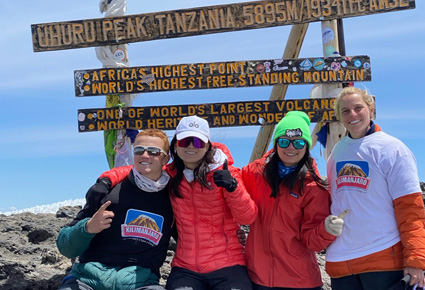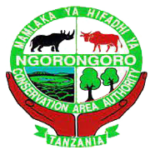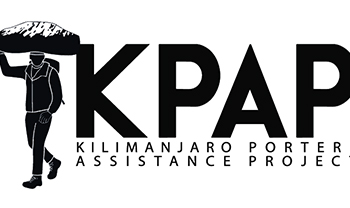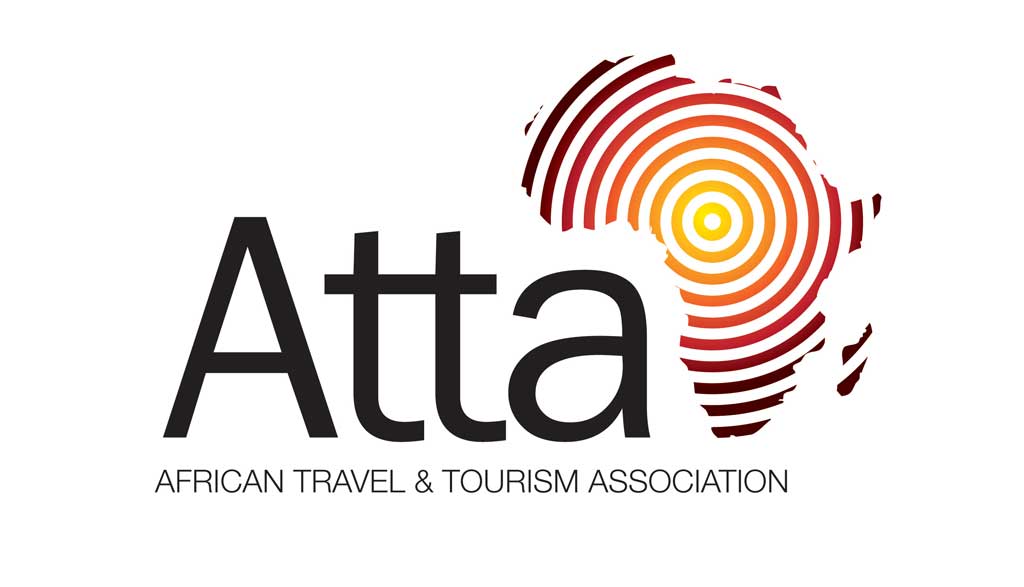Climbing Mount Kilimanjaro
Located in Tanzania, East Africa, Mt. Kilimanjaro is the highest free-standing mountain in the world and one of the Seven Summits prized by climbers. It stands 19,341 feet tall (5,895 meters), and has 3 volcanic cones as peaks: Kibo, Mawenzi, and Shira. Kibo is the highest peak followed by Mawenzi at 16,983 feet (5,149 meters) and then Shira at 13,000 feet (3,962 meters). Both Mawenzi and Shira are extinct volcanoes. Kibo is dormant (meaning it could erupt again), but the last major eruption took place between 150,000 and 200,000 years ago. The best months to climb Mt. Kilimanjaro are June, July, August, September, which offer the clearest and warmest conditions.
Climbing Africa’s highest free-standing mountain is an epic adventure for those who are prepared to take on a physical and mental challenge. Climbing Mount Kilimanjaro is an undertaking luring thousands of people every year. But before you sign up for one of Africa’s ultimate adventures, Climbing Mount Kilimanjaro, we’d like to prepare you for what to expect on the trek to Uhuru Peak.
Join us as we walk in the bootprints of famed explorers and mountaineers on our way to the top of Africa’s tallest peak, hiking through lush rainforests and alpine deserts, across glaciers by day, and sleeping closer to the stars than you ever dreamed possible by night. Over 1,500 trekkers make the ascent with us each year, and we’d love to help you to the top.
This is a multi-day trek to significant altitude, led by experienced guides. You will need to be determined and resilient to face the sub-zero temperatures and very thin air of the mountain peak. Tough, but truly rewarding, this challenge will leave you with memories to last a lifetime.
Our Climbing Mount Kilimanjaro trips are inclusive of accommodation, meals, flights, transport, and more, so all you need to do is focus on the challenge ahead!
6 Days Kilimanjaro Climb Machame Route
6 Days Kilimanjaro Climb Marangu Route
8 Days Kilimanjaro Climb Lemosho Route
Kilimanjaro Travel Guide
Kilimanjaro Gear Packing List
Guide companies will generally include group cooking equipment, tents, sleeping pads, and water filters.
Altitude Sickness On Kilimanjaro
You cannot talk about Kilimanjaro without discussing altitude sickness...
Best Time To Climb Kilimanjaro
Although it's technically possible to trek Tanzania's Mount Kilimanjaro year-round,
Kilimanjaro Foods
When people think about backpacking and camping, the Kilimanjaro Food that comes to mind usually
Private Toilet Tents On Kilimanjaro
For this there is a cost to cover the toilet attendant, who carries, pitches, cleans, and
Kilimanjaro FAQs
Tanzania has three major international airports: Dar es Salaam (DAR), Zanzibar (ZNZ) and Kilimanjaro Airport (JRO).
Kilimanjaro Travel Insurance
Acute Mountain Sickness (AMS) and its severe forms, High Altitude Pulmonary Edema (HACE) and High
Weather at Kilimanjaro
Kilimanjaro’s weather can be best understood by studying the dominant trade and anti-trade winds that pass through the region.

